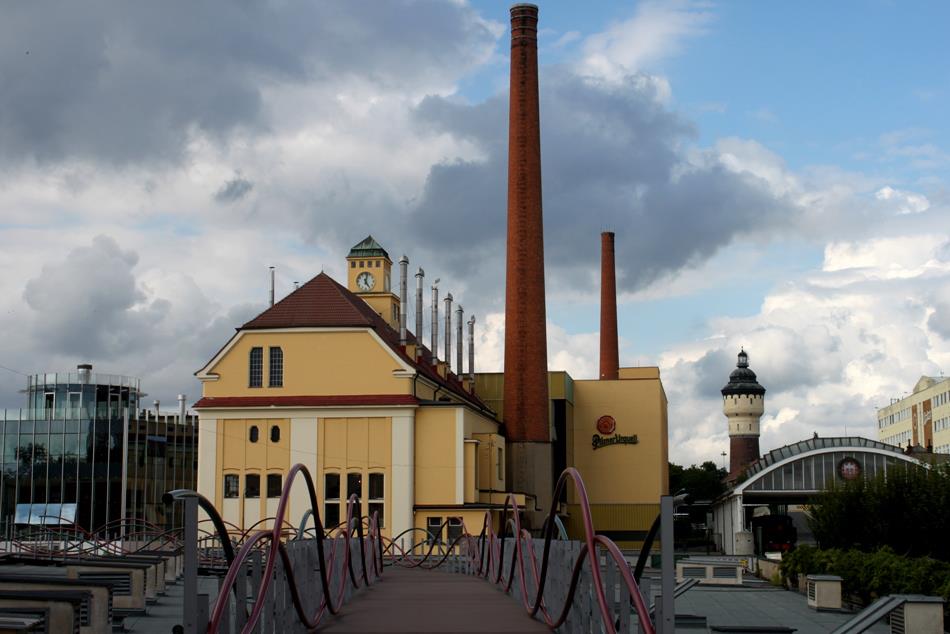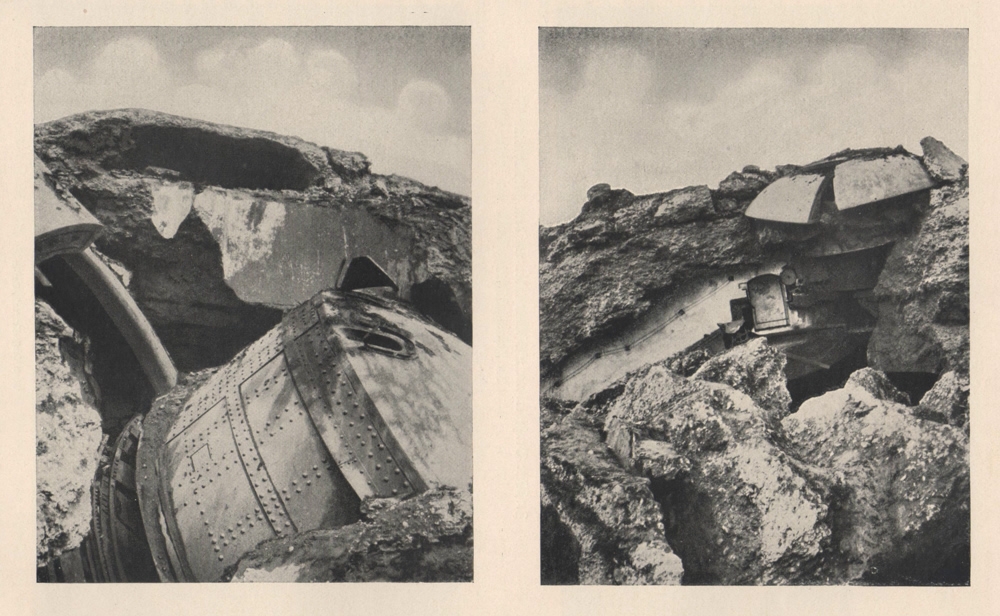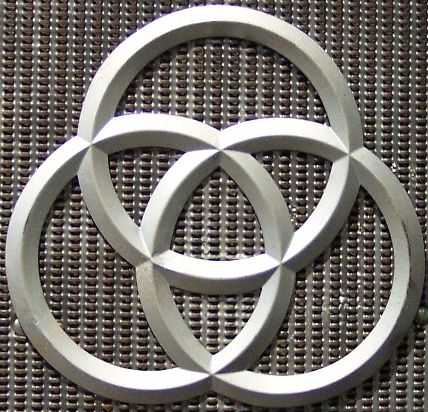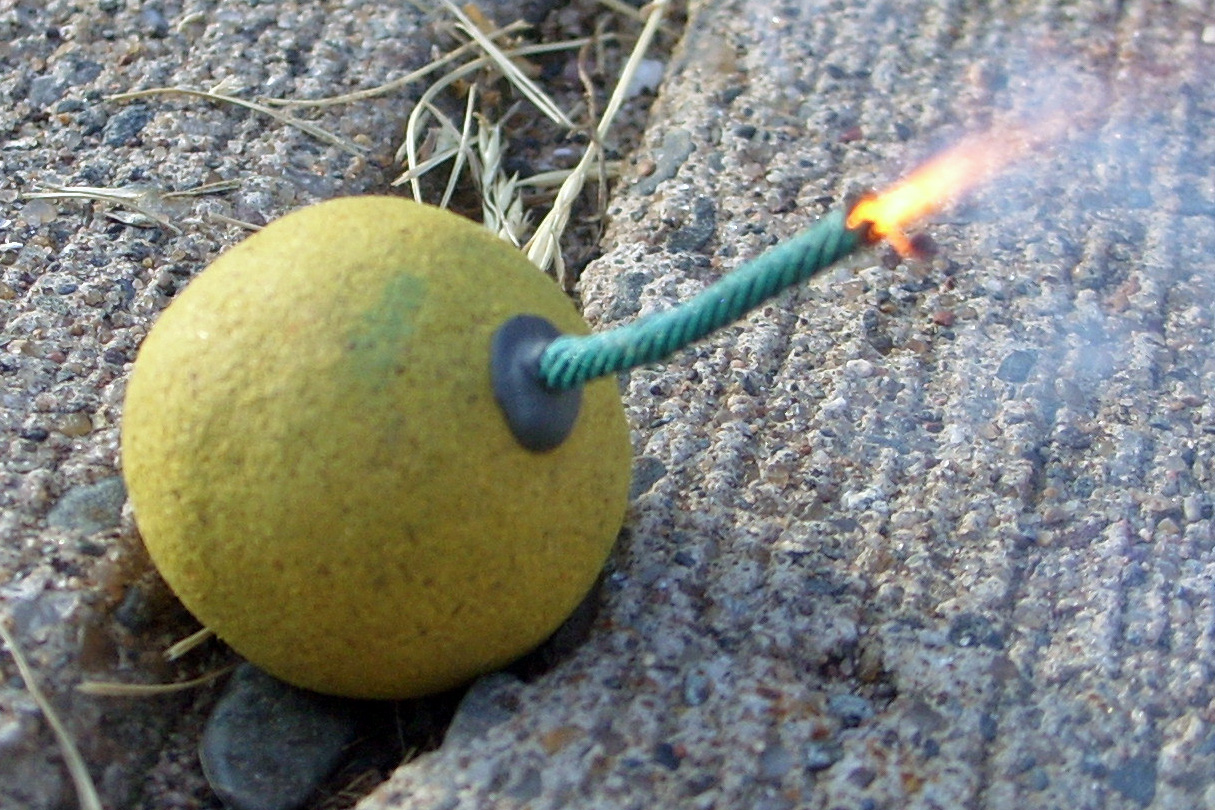|
Å koda 305 Mm Model 1911
The Škoda 30.5 cm Mörser M.11 is a siege howitzer produced by Škoda Works and used by the Austro-Hungarian Army during World War I and by Nazi Germany in World War II. Development Development began in 1906, when a development contract was placed by the Austro-Hungarian high command with Škoda Works in Plzeň to develop a weapon capable of penetrating the concrete fortresses being built in Belgium and Italy. Development work continued until 1909, when the first prototype was finished and, in 1910, fired secretly in Hungary. The weapon was able to penetrate of reinforced concrete with its special armour-piercing shell, which weighed . There were a few technical problems with the first piece, but, after few reconstructions in 1911, the upgraded piece made another round of testing in Felixdorf and in the mountains of Tyrol. After that, Moritz von Auffenberg, the Minister of War, placed an order for 24 of the new weapons. Description The weapon was transported in three se ... [...More Info...] [...Related Items...] OR: [Wikipedia] [Google] [Baidu] |
Austria-Hungary
Austria-Hungary, also referred to as the Austro-Hungarian Empire, the Dual Monarchy or the Habsburg Monarchy, was a multi-national constitutional monarchy in Central Europe#Before World War I, Central Europe between 1867 and 1918. A military and diplomatic alliance, it consisted of two sovereign states with a single monarch who was titled both the Emperor of Austria and the King of Hungary. Austria-Hungary constituted the last phase in the constitutional evolution of the Habsburg monarchy: it was formed with the Austro-Hungarian Compromise of 1867 in the aftermath of the Austro-Prussian War, following wars of independence by Hungary in opposition to Habsburg rule. It was dissolved shortly after Dissolution of Austria-Hungary#Dissolution, Hungary terminated the union with Austria in 1918 at the end of World War 1. One of Europe's major powers, Austria-Hungary was geographically the second-largest country in Europe (after Russian Empire, Russia) and the third-most populous (afte ... [...More Info...] [...Related Items...] OR: [Wikipedia] [Google] [Baidu] |
Plzeň
Plzeň (), also known in English and German as Pilsen (), is a city in the Czech Republic. It is the Statutory city (Czech Republic), fourth most populous city in the Czech Republic with about 188,000 inhabitants. It is located about west of Prague, at the confluence of four rivers: Mže, Úhlava, Úslava and Radbuza, together forming the Berounka River. Founded as a royal city in the late 13th century, Plzeň became an important town for trade on routes linking Bohemia with Bavaria. By the 14th century it had grown to be the third largest city in Bohemia. The city was besieged three times during the 15th-century Hussite Wars, when it became a centre of resistance against the Hussites. During the Thirty Years' War in the early 17th century the city was temporarily occupied after the Siege of Plzeň. In the 19th century, the city rapidly industrialised and became home to the Škoda Works, which became one of the most important engineering companies in Austria-Hungary and later ... [...More Info...] [...Related Items...] OR: [Wikipedia] [Google] [Baidu] |
Battle Of Liège
The Battle of Liège (5–16 August 1914) was the opening engagement of the German invasion of Belgium and the first battle of the First World War. The city of Liège was protected by a ring of modern fortresses, one of several fortified cities to delay an invasion to allow troops from the powers which had guaranteed Belgian neutrality to assist the Belgian Army in the expulsion of the invaders. The German 1st Army arrived late 5 August 1914 and captured the city on 7 August when Erich Ludendorff drove in and convinced the garrison to surrender. The surrounding forts fought on and several attacks by German infantry were costly failures. Super-heavy siege guns arrived and destroyed the forts one by one; the last fort surrendered on 16 August. The siege of Liège may have delayed the German invasion of France by four to five days. Railways in the Meuse river valley needed by the German armies in eastern Belgium were closed for the duration of the siege and German troops did not ... [...More Info...] [...Related Items...] OR: [Wikipedia] [Google] [Baidu] |
Fortified Position Of Liège
A fortification (also called a fort, fortress, fastness, or stronghold) is a military construction designed for the defense of territories in warfare, and is used to establish rule in a region during peacetime. The term is derived from Latin ("strong") and ("to make"). From very early history to modern times, defensive walls have often been necessary for cities to survive in an ever-changing world of invasion and conquest. Some settlements in the Indus Valley Civilization were the first small cities to be fortified. In ancient Greece, large cyclopean stone walls fitted without mortar had been built in Mycenaean Greece, such as the ancient site of Mycenae. A Greek '' phrourion'' was a fortified collection of buildings used as a military garrison, and is the equivalent of the Roman castellum or fortress. These constructions mainly served the purpose of a watch tower, to guard certain roads, passes, and borders. Though smaller than a real fortress, they acted as a bord ... [...More Info...] [...Related Items...] OR: [Wikipedia] [Google] [Baidu] |
Big Bertha (howitzer)
The 42 centimeter 14 L/12 (short naval cannon), or ''Minenwerfer-Gerät'' (M-Gerät), popularly known by the name of Big Bertha, was a German Empire, German List of siege artillery, siege howitzer built by Krupp AG in Essen, Germany and fielded by the Imperial German Army from 1914 to 1918. The had a Caliber (artillery), calibre barrel, making it one of the List of the largest cannon by caliber, largest artillery pieces ever fielded. The designed in 1911 as an iteration of earlier super-heavy German siege guns intended to break modern fortresses in France and Belgium and entered production in 1912. Test firing began in early 1914 and the gun was estimated to be finished by October 1914. When the First World War broke out, the two guns, still prototypes, were sent to Liège, Belgium, and destroyed Forts Fort de Pontisse, Pontisse and Fort de Loncin, Loncin. German soldiers bestowed the gun with the nickname "Big Bertha", which then spread through German newspapers to the Alli ... [...More Info...] [...Related Items...] OR: [Wikipedia] [Google] [Baidu] |
Krupp
Friedrich Krupp AG Hoesch-Krupp (formerly Fried. Krupp AG and Friedrich Krupp GmbH), trade name, trading as Krupp, was the largest company in Europe at the beginning of the 20th century as well as Germany's premier weapons manufacturer during both world war, world wars. It produced battleship, battleships, U-boats, tanks, howitzers, guns, utilities, and hundreds of other commodities. The company also produced steel used to build railroads in the United States and to cap the Chrysler Building. After the Nazi Germany, Nazis seized power in Germany, Krupp supported the regime and was one of many German businesses that profited from forced labour under German rule during World War II, slave labor during World War II. Upon the war's end, the head of the company, Alfried Krupp, was tried and convicted as a war criminal for employing prisoners of war, foreign civilians and concentration camp inmates under inhumane conditions in support of the Nazi war effort. Despite being senten ... [...More Info...] [...Related Items...] OR: [Wikipedia] [Google] [Baidu] |
Western Front (World War I)
The Western Front was one of the main Theatre (warfare), theatres of war during World War I. Following the outbreak of war in August 1914, the Imperial German Army, German Army opened the Western Front by German invasion of Belgium (1914), invading Luxembourg and Belgium, then gaining military control of important industrial regions in Third Republic of France, France. The German advance was halted with the First Battle of the Marne, Battle of the Marne. Following the Race to the Sea, both sides dug in along a meandering line of fortified trench warfare, trenches, stretching from the North Sea to the Swiss frontier with France, the position of which changed little except during early 1917 and again in 1918. Between 1915 and 1917 there were several offensives along this Front (military), front. The attacks employed massive artillery bombardments and massed infantry advances. Entrenchments, machine gun emplacements, barbed wire, and artillery repeatedly inflicted severe casualties ... [...More Info...] [...Related Items...] OR: [Wikipedia] [Google] [Baidu] |
Skoda 305 Mm Model 1911
Škoda means "pity" in the Czech and Slovak languages. It may also refer to: Czech brands and enterprises * Škoda Auto, automobile and previously bicycle manufacturer in Mladá Boleslav ** Škoda Motorsport, the division of Škoda Auto responsible for motorsport activities * Škoda Transportation, engineering company that manufactures rail vehicles, based in Plzeň * Škoda Works, engineering company, predecessor of Škoda Transportation * Škoda-Kauba, aircraft manufacturing subsidiary of the Škoda Works in occupied Czechoslovakia in World War II * Doosan Škoda Power, subsidiary of the Doosan Group, based in Plzeň People * Škoda (surname) * Skoda (Portuguese footballer) (born 1960) Art * ''Škoda lásky'', the original Czech title of the "Beer Barrel Polka" Other * British Rail Class 90 The British Rail Class 90 is a type of electric locomotive. They were built for mixed-traffic duties, operating from overhead lines and producing . They weigh 84.5tonnes and can ty ... [...More Info...] [...Related Items...] OR: [Wikipedia] [Google] [Baidu] |
Fuse (explosives)
In an explosive, pyrotechnics, pyrotechnic device, or military munition, a fuse (or fuze) is the part of the device that initiates function. In common usage, the word fuse is used indiscriminately. However, when being specific (and in particular in a military context), the term ''fuse'' describes a simple pyrotechnic initiating device, like the cord on a firecracker whereas the term ''fuze'' is used when referring to a more sophisticated ignition device incorporating mechanical and/or electronics, electronic components, such as a proximity fuze for an M107 projectile, M107 artillery shell, magnetometer, magnetic or acoustic signature, acoustic fuze on a sea mine, spring-loaded grenade fuze, pencil detonator, or anti-handling device. History Documented evidence suggests that the earliest fuses were first used by the Song dynasty, Song Chinese between the 10th and 12th centuries. After the Chinese invented gunpowder, they began adapting its explosive properties for use in milit ... [...More Info...] [...Related Items...] OR: [Wikipedia] [Google] [Baidu] |
Austro-Daimler M 12 Artillery Tractor
Immediately before World War I, Austro-Daimler constructed several series of the first petrol-engined four-wheel drive artillery tractors. These were some of the first commercially successful vehicles for both the Austro-Daimler company and their designer Ferdinand Porsche. Siege mortars In the period before World War I, France and Belgium fortified their Eastern borders by constructing a series of large forts, notably around Liège. To counter these forts during a potential invasion, Germany sought large siege artillery, from Krupp. "Because the number of batteries was four short of the pre-war planning estimates, the German General Staff requested four batteries (eight howitzers) of Škoda 30.5cm Model 11 howitzers from the Austro-Hungarian Army. These batteries arrived in mid-August, participating in the sieges of Namur, Maubeuge, and Antwerp, and in attacks against the French fortifications at Givet and the fortification zone between Verdun and Toul." Although Italy and A ... [...More Info...] [...Related Items...] OR: [Wikipedia] [Google] [Baidu] |
Horsepower
Horsepower (hp) is a unit of measurement of power, or the rate at which work is done, usually in reference to the output of engines or motors. There are many different standards and types of horsepower. Two common definitions used today are the imperial horsepower as in "hp" or "bhp" which is about , and the metric horsepower as in "cv" or "PS" which is approximately . The electric horsepower "hpE" is exactly , while the boiler horsepower is 9809.5 or 9811 watts, depending on the exact year. The term was adopted in the late 18th century by Scottish engineer James Watt to compare the output of steam engines with the power of draft horses. It was later expanded to include the output power of other power-generating machinery such as piston engines, turbines, and electric motors. The definition of the unit varied among geographical regions. Most countries now use the SI unit watt for measurement of power. With the implementation of the EU Directive 80/181/EEC on 1 January 201 ... [...More Info...] [...Related Items...] OR: [Wikipedia] [Google] [Baidu] |









